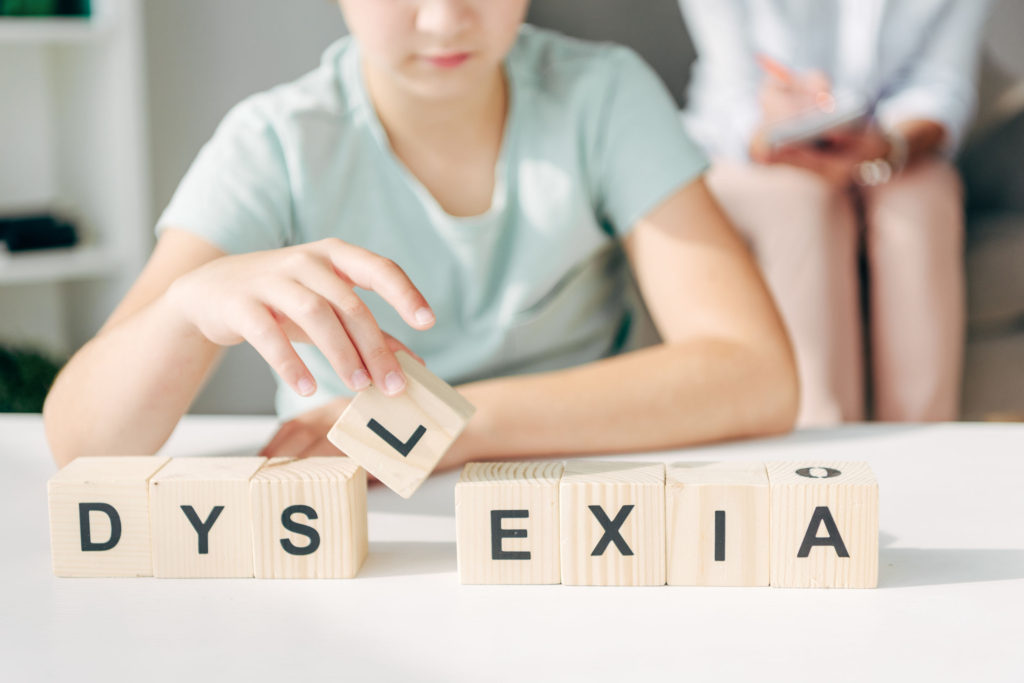What is Dyslexia
Dyslexia is a word that originated from Greek. “Dys” means difficult/weak, while “lexis” means to speak/words. In layman terms, Dyslexia means difficulties with learning and acquiring language.
Dyslexia is the most common learning difficulty, yet the least understood. Most people think of Dyslexia as a condition that merely affects the reading and writing ability. However, this is just the surface of the actual problem. Dyslexia affects phonological skills, visual and auditory processing skills, problem-solving skills, time management skills, planning, sequencing, organizing skills, working memory, and processing speed.
There are two ways of seeing Dyslexia; Some people see Dyslexia as an invisible ‘handicapped’ / a deficit / a learning disability or a disorder. Others regard it as a gift/ a strength/ a different way of learning and processing information. I choose to agree with the latter.

Dyslexia is a life-long condition
Dyslexia is neurobiological in origin. In other words, it is a brain-based condition. It is lifelong and irreversible. International Dyslexia Association (IDA) caution parents of treatment that promises quick fixes or cures. Although there is no cure for this condition, with the right tools and coping methods, Dyslexic children can learn to manage their differences and succeed academically.
Dyslexia is not a sight, hearing or intelligence problem
Contrary to the beliefs, confusion, and ambiguity out there, Dyslexia is not related to any sight or hearing impairments. Thus, treatments that work on correcting eye movement and hearing will not work. Above all, Dyslexia has nothing to do with low intelligence. All Dyslexic children are just as smart or smarter than their peers. They have at least an average to above-average intelligence. What sets them apart from the rest is the way they process information.
Dyslexia is hereditary
Dyslexia is genetic. Research shows that Dyslexia is passed down; It is traceable from family history. Usually, a Dyslexic child will have someone in the immediate family who has this condition. Although, in some cases, it could also be an extended family member.
Dyslexia is more common than we think
Research shows that 1 in 5 people have Dyslexia. Hence, Dyslexia is more common than what we perceived. That said, the experience is personal as it varies from individual to individual; there are no two Dyslexics that are exactly the same. Similar to other learning difficulties, Dyslexia occurs across a continuum. It ranges from mild, moderate, severe to profound.
Dyslexia does not discriminate
Dyslexia occurs everywhere around the world. It knows no cultural or social-economic boundaries. In the past, research shows that Dyslexia affects more boys than girls. However, in recent years, new findings indicate that Dyslexia affects both boys and girls equally.
Dyslexia is manageable
It is undoubtedly that children with Dyslexia will face insurmountable challenges during their school years. However, children who are equipped with the tools to manage their differences will survive and thrive.
The videos below are the first few that made sense to me at the beginning of my Dyslexia journey. The graphics and audio explanations not only helped me to understand Dyslexia better but they gave me hope. I know that as my children’s advocate, the road ahead will be winding and uncertain. However, armed with the knowledge and tools that I now have, I am positive that I can get them through their school years. I hope these videos will help you as much as they have helped me.
Embracing Dyslexia – Sept 2, 2013

0 comments